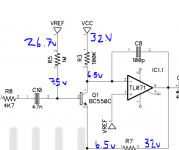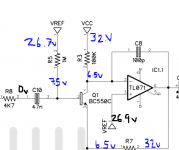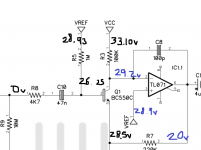devito
New member
Hey all! I am having some trouble with an Isosceles Boost build. This isn't my first pedal or even my first Isosceles. Pedal "works", but output is very quiet unless you play really hard, in which case the little bit of sound that comes out sounds a lot like a gated fuzz / spitty / etc.
Things I've checked so far:
1. Solder joints.
2. Replaced both chips with confirmed working versions (TL071 and TC1044SCPA). No change.
3. Replaced BC550C. Perhaps I had two bad ones in a row but... no change.
4. Compared all the orientations of things etc to my working Isosceles and everything is correct.
I am pretty meticulous about testing everything before I put it in, I don't remember anything reading incorrectly. I know my way around a multimeter/schematic and I've been tracing the circuit and haven't found anything strange yet. Any suggestions? I can add pictures or video if needed.
Cheers!
Things I've checked so far:
1. Solder joints.
2. Replaced both chips with confirmed working versions (TL071 and TC1044SCPA). No change.
3. Replaced BC550C. Perhaps I had two bad ones in a row but... no change.
4. Compared all the orientations of things etc to my working Isosceles and everything is correct.
I am pretty meticulous about testing everything before I put it in, I don't remember anything reading incorrectly. I know my way around a multimeter/schematic and I've been tracing the circuit and haven't found anything strange yet. Any suggestions? I can add pictures or video if needed.
Cheers!





